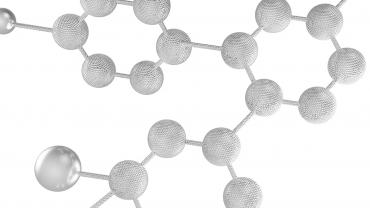
According to the Centers for Disease Control, periodontal disease poses one of the biggest threats to dental health. Periodontal disease may also involve age-related changes affecting approximately 90% of individuals 65 years of age and older. Periodontal health refers to the structures surrounding the teeth, including the gums and bones that support the teeth. It is often associated with infection and an inflammatory response.
Silver is an element that has recently been studied for its potential to support periodontal health. Purified silver has been shown in studies related to oral health to help inhibit the adhesion of harmful bacteria, such as Streptococcus mutans (S. mutans). Silver-containing agents have also been shown to influence the integrity of collagen fibrils, which are the major structural component of dentin. The collagen matrix within dentin can influence mineral dispersion and deposition. In laboratory studies, silver-containing agents have been shown to contribute to intrafibrillar remineralization.
A recent review published by Wang and colleagues in the International Journal of Nanomedicine explored the many applications of silver-based materials in support of oral health. The authors specifically focused on silver nanoparticles. The nanoparticles refer to particles in the size range of 1-100 nm. They have a relatively high surface-to-volume ratio that may influence bond strength. Due to their size, nanoparticles may also pass through structural barriers.
Many facets of modern dentistry currently use silver nanoparticles for their potential to support the body’s response to harmful bacteria. They are used in applications related to prosthodontics, oral surgery, implant dentistry, and endodontic treatment. They may also help promote tissue regeneration and gingival wound healing.
Silver nanoparticles support the body’s response to harmful bacteria through multiple mechanisms of action. They act by disrupting the cell wall and cytoplasmic membrane of bacteria, especially in gram-negative bacteria. They may also inhibit protein synthesis by denaturing ribosomes within the cell. Silver nanoparticles can also interfere with DNA replication within the bacterial cell and interfere with bacterial signal transduction.
In addition, silver may also help modulate certain parameters related to inflammation. A laboratory study showed decreases in certain cytokines, including tumor necrosis factor-alpha (TNF-α) and interleukin (IL)-12 when certain silver nanoparticles were administered to human dermal fibroblasts and keratinocytes.
An animal study reported increases in the production of TNF-α, IL-6, and IL-8 in the presence of silver nanoparticles. More research is needed to understand the underlying mechanisms and to reach applicable conclusions.
Silver is an element currently used in many settings in dentistry. It may help support periodontal health and the body’s immune response.
By Colleen Ambrose, ND, MAT